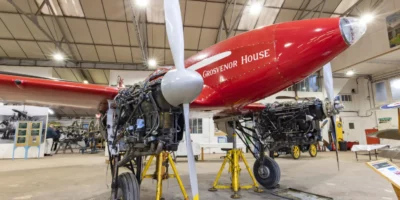It’s always good to receive feedback on things you’ve written, even when it suggests the thinking behind your views is flawed… Reader Brian Lawther has been in touch to suggest that my enthusiasm for hydrogen cells was misplaced, mainly he says, because the amount of energy required to source the hydrogen – extract it from water – and compress and transport it to the point of use, renders it rather less green than it looks on paper. The other method of hydrogen production, which is to extract from natural gas (methane is carbon and hydrogen x 4), produces large amounts of CO2 which is the main thing we are trying to avoid. Brian is right of course, but the same observation holds true for the extraction of crude oil from under the sea, refinement, transport to the point of use and so on, it’s just that there’s a worldwide mega industry in place to supply all that, which we are trying to replace. If we were considering starting from scratch, it would probably be a similar discussion.
Brian also reminded me that the platinum required for catalysts – like those of a fuel cell, and the exhaust cat on your car – is considerably rarer than lithium (and also found mainly in parts of the world with which we have trickier relations). We are talking much smaller quantities though (smaller still when there are no petrol nor diesel cars on the roads), and there is plenty of ongoing research into alternatives. Rice University in Houston has developed a process to implant metal particles into the new wonder material graphene (metal oxide-laser induced graphene or MO-LIG) and they say it’s 60% as efficient as platinum… at the moment. It would be jolly nice to think the ZeroAvia fuel cell featured MO-LIG catalysts developed by one of its own, but it has been nothing if not tight-lipped on the details. It’s getting it out there that matters though, and aviation is a nicely high-profile shop window, even if it’s effectively a minority activity.
Research into emission reduction has actually been going on for a long time. I remember way back when, flying my Fairchild to the little strip just up the road from the Lotus factory in Hethel, to find that the technology side of Lotus appeared to have carried on where Chapman had left off, an extraordinary ferment of advanced thinking about everything to do with the internal combustion engine. My host showed me a single-cylinder Rover K-series which he had created from an Elise engine, fitted with the electronic camshaft developed from the active suspension on the F1 cars. It allowed him to open the valves wherever in the cycle and as many times as necessary.
“Research into emission reduction has actually been going on for a long time”
I saw it running with a conventional spark, then that was turned off and the cam timing altered to open more than once, sucking hot exhaust gas back into the cylinder. That ensured the mixture in the cylinder was completely burnt – or something of a Holy Grail in emission reduction. “Look,” said my host, “zero oxides of Nitrogen…”. I agreed it was extraordinary. When would we see it on all cars? “Probably never,” he said, looking into the distance. “It needs a Tier One supplier like Bosch or Visteon to pick it up and offer it to Ford or whoever, and they will say ‘great’, we’ll need 10 million units by March and that’s what we’re prepared to pay. Then they’ll be desperately trying to find a way round our patents…” It was an early lesson in the realities of Big Commerce.
Talking of which, Elon Musk (yes, that one) is on record saying that until battery efficiency reaches 2.5kWh per kilo, electric aircraft will not be a practical proposition. Current weight is about double that and he should know. It’s also true that any fuel cell aircraft (like ZeroAvia’s) will still need a battery as backup. So, and as Brian says, batteries are probably still the most important thing and there is certainly an enormous amount of research going on, mainly in South Korea, Japan and China, which predictably leads the world.
Brief research revealed about 20 different strategies, including vertically aligned carbon nanotube electrodes, cobalt-free lithium-ion, lithium-sulphur, and one using pure silicon produced from ground sand for the anode. A graphene battery from a Spanish company claims a 500-mile range on a regular EV, and there’s another from Rice University in the shape of micro supercapacitors made from plastic, offering a 50-fold reduction in charge time. Most of the focus seemed to be cheaper and less toxic materials (and shorter charging time) but there is also some outside-the-box thinking which is always more exciting. Like the aluminium-air battery which relies on a reaction between oxygen in the air and aluminium as we know it, both of which are obviously common. It’s not rechargeable, although it is recyclable, but… it needs some form of catalyst.
It would need a complete infrastructure overhaul, where you replace the batteries in your Hyundai (put them in the council’s battery recycle bin), drive to the airfield, take the batteries out of your Pipistrel, (in the recycle bin), clip in another set and set off round the circuit with the next student. A bit like replacing a set of AAs in your GPS, only bigger…
Working vintage aircraft and cars make Mark particularly happy
[email protected]







